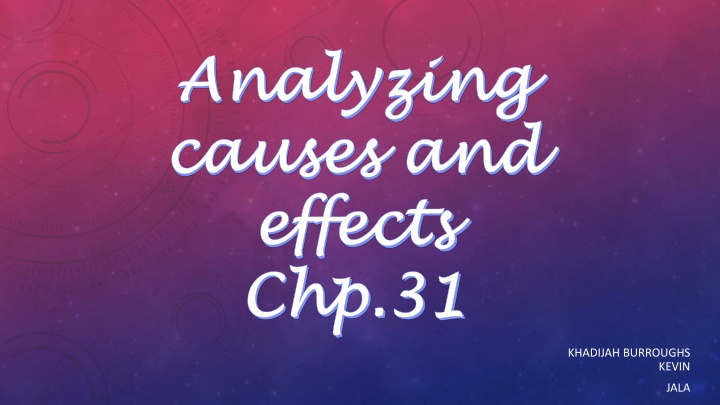Intermittent Diseases in Homeopathy
Intermittent diseases in homeopathy are characterized by recurring patterns of illness at specific intervals. Typical and alternating types are identified, with classifications based on febrile and non-febrile presentations. Hahnemann's classification of intermittent fevers further highlights diverse manifestations and treatment approaches in homeopathic practice.
Download Presentation

Please find below an Image/Link to download the presentation.
The content on the website is provided AS IS for your information and personal use only. It may not be sold, licensed, or shared on other websites without obtaining consent from the author.If you encounter any issues during the download, it is possible that the publisher has removed the file from their server.
You are allowed to download the files provided on this website for personal or commercial use, subject to the condition that they are used lawfully. All files are the property of their respective owners.
The content on the website is provided AS IS for your information and personal use only. It may not be sold, licensed, or shared on other websites without obtaining consent from the author.
E N D
Presentation Transcript
Analyzing Analyzing causes and causes and effects effects Chp.31 Chp.31 KHADIJAH BURROUGHS KEVIN JALA
INTRODUCTION INTRODUCTION We often speculate about plausible cause or likely effects. When writing about, causes and effects , generally we re arguing the causes and effects we consider probably
DETERMINING REASONABLE DETERMINING REASONABLE CAUSE AND EFFECT CAUSE AND EFFECT Whenever you have reasons to ask what caused this or what would happen, most likely there will be several possible causes and just as many effects. While there may be obvious causes they are often less important then others that are more difficult to find. In like manner, long term effect are more important then short effects. Sometimes you may have to do some research to recognize possible
ARGUING FOR CAUSE AND ARGUING FOR CAUSE AND EFFECT EFFECT After identifying several logical causes or foreseeable effects you will need to argue that some are probable than others. You must have convincing support for the argument since you cannot prove that A causes B; you can only show that A likely causes B. Most of the time you will need to qualify what you say when it comes to cause and effects. Meaning you should that it suggest rather than it shows , because probable causes and effects cannot be proved for sure, so acknowledge that your argument isn t that final word on the subject.
WAYS TO ORGANIZING AND WAYS TO ORGANIZING AND ANALYSIS OF CAUSE AND ANALYSIS OF CAUSE AND EFFECT EFFECT There are three different common ways to organize them: a) identify the cause and discuss the effects- the case leads to several different effects b) Identify the effect and than trace its cause- the effect results from several different causes. c) Identify a chain of causes and effects- the first cause leads to the effect, which then leads to the next effect, and etc. continue the chain as needed.
CONSIDERING THE RHETORICAL CONSIDERING THE RHETORICAL SITUATION SITUATION Purpose: Your purpose could be to analyze causes, but sometimes you will have another goal to analyze Audience: whose your intended audience and how does analyzing your causes reach your audience. As a writer or a speaker, it is necessary to think about the message you want to send to your audience. Genre: Do you have to analyze your causes because of your genre? Stance: what is your view point, and could analyzing the causes and/or effects show that viewpoint? Can it help you demonstrate seriousness or show why your conclusion are reasonable? Media/ design: sometimes providing diagrams or drawing helps the readers see how the causes lead to the effects.























